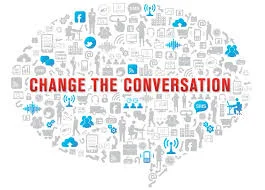Writing classes aren’t working so well. I invite you to watch a short video from CNBC, narrated by Kelley Holland, “Why new employees can’t write and why employers are mad.” (http://video.cnbc.com/gallery/?video=3000217064)
She points out that we’re doing more writing in the workplace than we did 30-40 years ago, so writing skills have become even more important. But employers see that new employees lack strong writing skills. She points out that even graduates from the nation’s top business schools often lack necessary writing skills.
I’ve seen this to be true in my 30 years of writing consulting for the public and private sectors, working with the best and brightest graduates from programs in public policy, engineering, and business, etc.
Ms. Holland suggests one cause for this problem: we focus more on math and science in schools to the exclusion of writing classes. This may be true. But I believe we teach writing ineffectively. We teach students to write essays. Writing essays does not develop the kind of critical-thinking and writing concepts and techniques students will need on the job.
THE PROBLEM?
In high school and college, when students are in a writing class, most likely they’re writing essays. Most likely they’re taught how to write primarily by writing essays. Perhaps essays have their place in the curriculum. But essays should be excluded from most writing classes and saved for advanced classes that seek to teach students expressive writing and eloquence.
The essay is a bad way to teach writing for most beginning and intermediate writing classes…from first grade through college. Here’s why…..
As a writer you face two big questions:
· What should I say?
· How should I say it?
And workplace writers are further admonished to keep it simple (stupid): K.I.S.S. But how?
If you have a simple message—Be at the meeting at 2PM, Suite A—KISS is pretty easy. But as the message becomes more complex, the more complex it becomes to keep the message simple.
If you’re stuck, intimidated, frustrated, or confused by trying to figure out what you should say and how you should say it, all while keeping it simple, this blog post is for YOU! You should love to write about as much as you love to talk, right?
(1) You need to gain a little insight into how readers read.
(2) You need to understand how writing communicates.
Knowing these two things will help you take on any writing task with confidence, while being a good K.I.S.S.er…..
Whether a piece of writing, from a tweet or text to an email or full-blown report, is itsy-bitsy or multitudinous, delivered electronically or in print, it must fork over useful information or it won’t be read.
(This, btw, is why we dislike most writing done in school—we call it “writing for teachers”—because it usually takes the USEFUL out of USEFUL INFORMATION. It’s written for a teacher or a phantom reader, not a real USER/READER.)
Therefore, we wish to change the conversation about “writing.” We’d like to start calling it CUIng—Clustering Useful Information.
Find out why writers should love their readers the way galaxies love their black holes….
When most people think about “writing,” they think of the sentences, the choice of words, proper punctuation and grammar, how sentences are clustered into paragraphs. But writing is far, far more than that.
When teachers of business/technical writing classes think about their subject, they usually think in terms of generic genres—types of writing like email, memos, good-news letters, bad-news letters, blog posts, infographics, social media, the proposal, the process report, the analytical report, the résumé and cover letter, etc., etc. But workplace writing is far, far more than that.
We formulated a radically reader/user-based approach to workplace writing founded on the model of a conversation (see our textbook, Mastering Workplace Writing--https://www.amazon.com/Mastering-Workplace-Writing-Harvey-Lillywhite/dp/0692520082) back in the mid-1990s, a model we’d been developing since the mid-1980s.
As we ask the question: How do you teach people to write well in the digital age? we think this new approach to workplace writing is finally beginning to change the conversation about workplace writing. Here are five ways we’re making a big difference….
The college students in my writing classes are, by now, digital natives. Writing, for them, is something done on a phone…or maybe a tablet/laptop. These students clearly don’t know the standard comma rules. The evidence shows that they know what a comma is, and they obviously see them in some of the more officiated writing online. We know they know what a comma is because they usually sprinkle them, sparingly, through the college essays they’re required to write. But they were not taught the standard comma rules, as I was in the second half of the 20th century, and they don’t care. Should they? Should we?
If you learn to punch up your punctuation, proofreading, and paragraphs; spit-shine your sentences; and touch up your typing, you may feel better about your writing, but until you go up in your helicopter and get a panoramic view of what writing really is, your writing may not become much more efficient or effective….
Lots of people think they know all they need to know about writing. But do they really know how to KISS? ....
While auditors and audit teams must always strive to make reports accurate, objective, and timely, audit reports must finally be useful and highly readable. A useful report presents busy decision makers with instrumental knowledge that helps them make important operational decisions....








